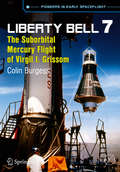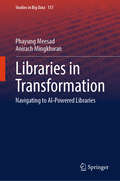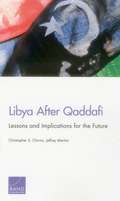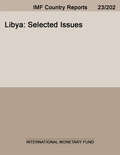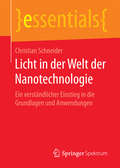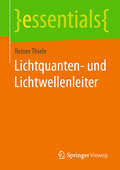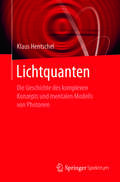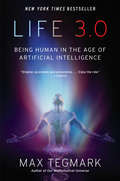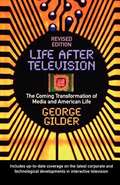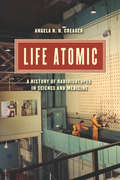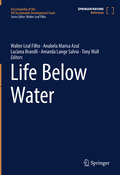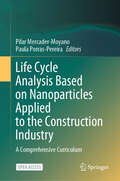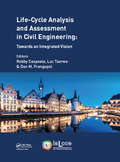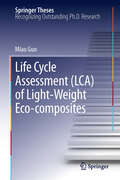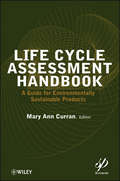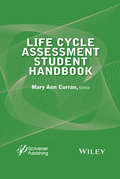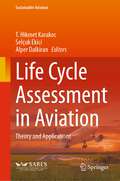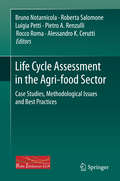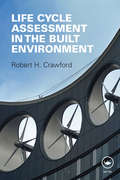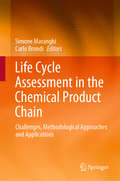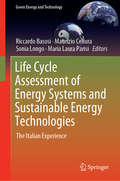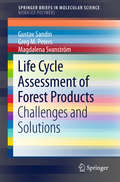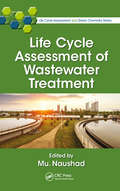- Table View
- List View
Liberty Bell 7
by Colin BurgessNASA's Mercury astronauts were seven highly skilled professional test pilots. Each of them seemed to possess the strength of character and commitment necessary to overcome apparently insurmountable obstacles as the United States entered into a Cold War space race with the Soviet Union. This was never more evident than on the epic suborbital MR-4 flight of Liberty Bell 7 with astronaut Virgil ('Gus') Grissom piloting the spacecraft to a successful splashdown, followed by the premature blowing of the craft's explosive hatch. After a hurried exit and struggling to stay afloat, he could only watch helplessly as the recovery helicopter pilot valiantly fought a losing battle to save the sinking capsule. That day NASA not only lost a spacecraft but came perilously close to losing one of its Mercury astronauts, a decorated Korean fighter pilot from Indiana who might one day have soared to the highest goal of them all, as the first person to set foot on the Moon. For the first time, many of those closest to the flight of Liberty Bell 7 and astronaut Gus Grissom offer their stories and opinions on the dramatic events of July 21, 1961, and his later pioneering Gemini mission. They also tell of an often controversial life cut tragically and horrifically short in a launch pad fire that shocked the nation.
Libraries in Transformation: Navigating to AI-Powered Libraries (Studies in Big Data #157)
by Phayung Meesad Anirach MingkhwanThis book discovers how libraries evolved in the digital age with “Libraries in Transformation: Navigating to AI-powered Libraries.” This insightful book explores the profound shifts within libraries due to the integration of advanced technologies such as artificial intelligence (AI) and the Internet of Things (IoT). Providing a comprehensive roadmap, this book guides libraries in adapting and thriving while maintaining their core mission of providing universal access to knowledge and fostering community engagement.
Libya After Qaddafi: Lessons and Implications for the Future
by Christopher S. Chivvis Jeffrey MartiniThe 2011 overthrow of Libyan dictator Muammar Qaddafi by internationally backed rebel groups has left Libya's new leaders with a number of post-conflict challenges, including establishing security, building political and administrative institutions, and restarting the economy. This report assesses these challenges, the impact of the limited international role in efforts to overcome them, and possible future roles for the international community.
Libya: Selected Issues (Imf Staff Country Reports #No. 13/151)
by International Monetary Fund. Middle East and Central Asia Dept.A report from the International Monetary Fund.
Libya: Selected Issues (Imf Staff Country Reports #No. 13/151)
by International Monetary Fund. Middle East and Central Asia Dept.A report from the International Monetary Fund.
Licht in der Welt der Nanotechnologie: Ein verständlicher Einstieg in die Grundlagen und Anwendungen (essentials)
by Christian SchneiderDieses essential gibt einen #65533;berblick #65533;ber die der Nanotechnologie zugrunde liegenden physikalischen Prinzipien, die es heute erm#65533;glichen, mikroskopische Effekte technologisch zu nutzen. Es werden Methoden vorgestellt, welche die Herstellung von Nanostrukturen mit h#65533;chster Pr#65533;zision erlauben. Im letzten Kapitel gibt der Autor einen #65533;berblick #65533;ber spannende technologische Anwendungen, angefangen vom Einsatz von auf Nanotechnologie basierenden Effekten bei Kirchenglasfenstern bis hin zu Solarzellen und CCD-Chips.
Lichtquanten- und Lichtwellenleiter (essentials)
by Reiner ThieleReiner Thiele entwickelt neue Modelle für sogenannte Lichtquantenleiter. Dazu beweist er Erhaltungssätze für optische Spannungen und Ströme. Er kreiert Ohm’sche Quantengesetze für die Systemelemente einer Punkt-Punkt-Verbindung beim Wechsel ihrer Ansteuerart und schlägt Dreieck- oder Sägezahn-Impulse als Modulationssignale vor. Dadurch entstehen inverse Gabor-Wavelets im Lichtquantenleiter, mit denen eine schnelle Datenübertragung erfolgen kann und die zu effizienten schaltungstechnischen Lösungen an den Endstellen der Übertragungsstrecke führt.
Lichtquanten: Die Geschichte des komplexen Konzepts und mentalen Modells von Photonen
by Klaus HentschelDieses Buch besch#65533;ftigt sich mit der Entstehungsgeschichte des komplexen Konzeptes des Photons aus wissenschaftshistorischer, kognitionspsychologischer und naturwissenschaftlicher Sicht. Dabei werden unter anderem sechs verschiedene mentale Modelle des Lichtquantums bzw. Photons diskutiert und der Bogen vom Teilchenmodell Newtons, dem Singularit#65533;tsmodell Einstein und Bohrs bis zum modernen Konzept der Quantisierung des elektromagnetischen Feldes in der Quantenelektrodynamik gespannt. Der Autor besch#65533;ftigt sich zuerst mit der Entwicklungsgeschichte des Photons innerhalb der modernen Physik ab 1900, bevor er die zw#65533;lf semantischen Bedeutungsschichten des Photons ausgehend vom Anfang des 20. Jahrhunderts pr#65533;sentiert. Anschlie#65533;end werden die mentalen Modelle im Laufe der Geschichte bis zur Moderne beschrieben und diskutiert und das heutige Modell des Photons besprochen. Das Buch richtet sich sowohl an Naturwissenschaftler mit physikalischem Hintergrund als auch an Wissenscha ftshistoriker und Andere, die sich mit der Begriffs- und Ideengeschichte von Konzepten auseinandersetzen.
Liebe gegen den Strich
by Charlie Cochet A. D. FerenczKelly Sutton ist ein ehrgeiziger junger Amerikaner, der als Praktikant bei der Photonic Royal Society in New London arbeitet. Seit über einem Jahr ist er dem Projekt Mars zugeteilt, das so geheim ist, dass selbst Kelly nicht weiß, worum es sich dabei genau handelt. Er weiß nur, dass seine Mitarbeit an dem Projekt zum Wohl der Menschheit ist. Und mehr interessiert ihn auch nicht. Kellys Welt wird auf den Kopf gestellt, als ihn die Sorge um das merkwürdige Verhalten seines Mentors zufällig über ein streng gehütetes, fürchterliches Geheimnis stolpern lässt. Hinter dem Projekt, das offiziell der Verbesserung des menschlichen Lebens dienen soll, verbirgt sich das Potential zu Gewalt und Vernichtung. Diese schreckliche Erkenntnis zwingt Kelly zu einer Entscheidung. Soll er die Augen vor der Wahrheit verschließen und seinen Job behalten, wie er es immer getan hat, oder soll er seine Karriere riskieren und den Mann retten, der ihm das Herz geraubt hat?
Life 3.0: Being Human in the Age of Artificial Intelligence
by Max TegmarkNew York Times Best SellerHow will Artificial Intelligence affect crime, war, justice, jobs, society and our very sense of being human? The rise of AI has the potential to transform our future more than any other technology—and there&’s nobody better qualified or situated to explore that future than Max Tegmark, an MIT professor who&’s helped mainstream research on how to keep AI beneficial. How can we grow our prosperity through automation without leaving people lacking income or purpose? What career advice should we give today&’s kids? How can we make future AI systems more robust, so that they do what we want without crashing, malfunctioning or getting hacked? Should we fear an arms race in lethal autonomous weapons? Will machines eventually outsmart us at all tasks, replacing humans on the job market and perhaps altogether? Will AI help life flourish like never before or give us more power than we can handle? What sort of future do you want? This book empowers you to join what may be the most important conversation of our time. It doesn&’t shy away from the full range of viewpoints or from the most controversial issues—from superintelligence to meaning, consciousness and the ultimate physical limits on life in the cosmos.
Life After Television
by George GilderPredicts that personal computers linked into a global network will soon replace television, and thereby overthrow the tyranny of mass media, renew individual power, and promote democracy worldwide. Urges American business to get on the ball with fiber optics. Reprinted from the 1990 edition published by Whittle Books. No index or bibliography.
Life Atomic: A History of Radioisotopes in Science and Medicine (Synthesis Ser.)
by Angela N. CreagerAfter World War II, the US Atomic Energy Commission (AEC) began mass-producing radioisotopes, sending out nearly 64,000 shipments of radioactive materials to scientists and physicians by 1955. Even as the atomic bomb became the focus of Cold War anxiety, radioisotopes represented the government’s efforts to harness the power of the atom for peace—advancing medicine, domestic energy, and foreign relations. In Life Atomic, Angela N. H. Creager tells the story of how these radioisotopes, which were simultaneously scientific tools and political icons, transformed biomedicine and ecology. Government-produced radioisotopes provided physicians with new tools for diagnosis and therapy, specifically cancer therapy, and enabled biologists to trace molecular transformations. Yet the government’s attempt to present radioisotopes as marvelous dividends of the atomic age was undercut in the 1950s by the fallout debates, as scientists and citizens recognized the hazards of low-level radiation. Creager reveals that growing consciousness of the danger of radioactivity did not reduce the demand for radioisotopes at hospitals and laboratories, but it did change their popular representation from a therapeutic agent to an environmental poison. She then demonstrates how, by the late twentieth century, public fear of radioactivity overshadowed any appreciation of the positive consequences of the AEC’s provision of radioisotopes for research and medicine.
Life Below Water (Encyclopedia of the UN Sustainable Development Goals)
by Walter Leal Filho Tony Wall Luciana Brandli Anabela Marisa Azul Amanda Lange SalviaThe problems related to the process of industrialisation such as biodiversity depletion, climate change and a worsening of health and living conditions, especially but not only in developing countries, intensify. Therefore, there is an increasing need to search for integrated solutions to make development more sustainable. The United Nations has acknowledged the problem and approved the “2030 Agenda for Sustainable Development”. On 1st January 2016, the 17 Sustainable Development Goals (SDGs) of the Agenda officially came into force. These goals cover the three dimensions of sustainable development: economic growth, social inclusion and environmental protection. The Encyclopedia of the UN Sustainable Development Goals comprehensively addresses the SDGs in an integrated way. It encompasses 17 volumes, each one devoted to one of the 17 SDGs. This volume is dedicated to SDG 14 “Conserve and sustainably use the oceans, seas and marine resources for sustainable development". Marine and coastal bio-resources, play an essential role in human well-being and social and economic development. This volume addresses this sustainability challenge providing the description of a range of terms, which allows a better understanding and fosters knowledge about it.Concretely, the defined targets are:Prevent and significantly reduce marine pollution of all kinds, in particular from land-based activities, including marine debris and nutrient pollutionSustainably manage and protect marine and coastal ecosystems to avoid significant adverse impacts, including by strengthening their resilience, and take action for their restoration in order to achieve healthy and productive oceansMinimize and address the impacts of ocean acidification, including through enhanced scientific cooperation at all levelsEffectively regulate harvesting and end overfishing, illegal, unreported and unregulated fishing and destructive fishing practices and implement science-based management plans, in order to restore fish stocks in the shortest time feasible, at least to levels that can produce maximum sustainable yield as determined by their biological characteristicsConserve at least 10 per cent of coastal and marine areas, consistent with national and international law and based on the best available scientific informationProhibit certain forms of fisheries subsidies which contribute to overcapacity and overfishing, eliminate subsidies that contribute to illegal, unreported and unregulated fishing and refrain from introducing new such subsidies, recognizing that appropriate and effective special and differential treatment for developing and least developed countries should be an integral part of the World Trade Organization fisheries subsidies negotiation 16Increase the economic benefits to small island developing states and least developed countries from the sustainable use of marine resources, including through sustainable management of fisheries, aquaculture and tourism Increase scientific knowledge, develop research capacity and transfer marine technology, taking into account the Intergovernmental Oceanographic Commission Criteria and Guidelines on the Transfer of Marine Technology, in order to improve ocean health and to enhance the contribution of marine biodiversity to the development of developing countries, in particular small island developing states and least developed countriesProvide access for small-scale artisanal fishers to marine resources and marketsEnhance the conservation and sustainable use of oceans and their resources by implementing international law as reflected in the United Nations Convention on the Law of the Sea, which provides the legal framework for the conservation and sustainable use of oceans and their resources, as recalled in paragraph 158 of “The future we want”Editorial Board</di
Life Cycle Analysis Based on Nanoparticles Applied to the Construction Industry: A Comprehensive Curriculum
by Pilar Mercader-Moyano Paula Porras-PereiraThis open access book describes in the recent years, there has been a notable upsurge in the use of nanomaterials, particularly within the construction and building sectors. The incorporation of nanoparticles introduces noteworthy changes in the physico-mechanical and physical–chemical characteristics of construction materials. Despite the acknowledged advantages of employing nanomaterials, uncertainties persist regarding their widespread adoption in development and applications, especially concerning potential environmental and human health implications. A crucial aspect in thoroughly assessing the environmental impacts of nanoproducts is the imperative quantification of effects on ecosystems and human health throughout the entire life cycle of these products. The indispensable utilization of a comprehensive tool, such as Life Cycle Assessment, becomes paramount in gaining a nuanced understanding of potential environmental and health challenges, thereby ensuring the environmental sustainability of nanomaterials. This academic publication endeavours to provide nanoproduct manufacturers, construction industry professionals, and waste managers with the necessary knowledge to comprehend the environmental and health impacts associated with the manufacturing, application, and disposal processes of nanoproducts used in the construction industry. This contribution aims to enhance their personal and professional development, consequently bolstering their employability at the European level. A thorough comprehension of potential releases throughout the entire life cycle of nanoproducts and their potential effects is imperative for ensuring the safe and sustainable utilization of these innovative materials. The application of life cycle thinking emerges as a pivotal component in appropriately evaluating the potential impacts associated with nanomaterial releases.
Life Cycle Analysis and Assessment in Civil Engineering: Proceedings of the Sixth International Symposium on Life-Cycle Civil Engineering (IALCCE 2018), 28-31 October 2018, Ghent, Belgium (Life-Cycle of Civil Engineering Systems)
by Robby Caspeele Luc Taerwe Dan M. FrangopolThis volume contains the papers presented at IALCCE2018, the Sixth International Symposium on Life-Cycle Civil Engineering (IALCCE2018), held in Ghent, Belgium, October 28-31, 2018. It consists of a book of extended abstracts and a USB device with full papers including the Fazlur R. Khan lecture, 8 keynote lectures, and 390 technical papers from all over the world.Contributions relate to design, inspection, assessment, maintenance or optimization in the framework of life-cycle analysis of civil engineering structures and infrastructure systems. Life-cycle aspects that are developed and discussed range from structural safety and durability to sustainability, serviceability, robustness and resilience. Applications relate to buildings, bridges and viaducts, highways and runways, tunnels and underground structures, off-shore and marine structures, dams and hydraulic structures, prefabricated design, infrastructure systems, etc. During the IALCCE2018 conference a particular focus is put on the cross-fertilization between different sub-areas of expertise and the development of an overall vision for life-cycle analysis in civil engineering.The aim of the editors is to provide a valuable source of cutting edge information for anyone interested in life-cycle analysis and assessment in civil engineering, including researchers, practising engineers, consultants, contractors, decision makers and representatives from local authorities.
Life Cycle Assessment (LCA) of Light-Weight Eco-composites
by Miao GuoMiao Guo's PhD thesis provides scientific insights into the environmental issues related to biocomposites based on starch-polyvinyl alcohol (PVOH) blends. The author contributes significantly to the methodological issues underlying the Life Cycle Assessment (LCA) modelling approach. As well as presenting complete LCA inventories using primary data from a variety of sources, Guo develops a new modelling approach incorporating the process-oriented biogeochemistry model Denitrification-Decomposition (DNDC) into site-specific LCA studies to simulate carbon and nitrogen dynamics in the wheat agro-ecosystem. This thesis addresses important LCA data quality issues by using comprehensive sensitivity and uncertainty analyses and has resulted in a large number of publications in internationally renowned journals.
Life Cycle Assessment Handbook
by Mary Ann CurranThe first book of its kind, the LCA Handbook will become an invaluable resource for environmentally progressive manufacturers and suppliers, product and process designers, executives and managers, and government officials who want to learn about this essential component of environmental sustainability.
Life Cycle Assessment Student Handbook
by Mary Ann CurranThis student version of the popular bestseller, Life Cycle Assessment Handbook, is not a watered-down version of the original, but retains all of the important information and valuable lessons provided in the first book, along with helpful problems and solutions for the student learning about Life Cycle Assessment (LCA). As the last several decades have seen a dramatic rise in the application of LCA in decision making, the interest in the life cycle concept as an environmental management and sustainability tool continues to grow. The LCA Student Handbook offers a look at the role that life cycle information, in the hands of companies, governments and consumers, may have in improving the environmental performance of products and technologies. It concisely and clearly presents the various aspects of LCA in order to help the reader better understand the subject. The international success of the sustainability paradigm needs the participation of many stakeholders, including citizens, corporations, academia, and NGOs. The handbook links LCA and responsible decision making and how the life cycle concept is a critical element in environmental sustainability. It covers issues such as building capacity in developing countries and emerging economies so that they are more capable of harnessing the potential in LCA for sustainable development. Governments play a very important role with the leverage they have through procurement, regulation, international treaties, tax incentives, public outreach, and other policy tools. This compilation of points to the clear trend for incorporating life cycle information into the design and development processes for products and policies, just as quality and safety concerns are now addressed throughout product design and development. The Life Cycle Assessment Student Handbook is not just for students. It is also a valuable resource for practitioners looking for a desktop reference on LCA or for any engineer, manager, or policy-maker wishing to learn about LCA.
Life Cycle Assessment in Aviation: Theory and Applications (Sustainable Aviation)
by T. Hikmet Karakoc Alper Dalkiran Selçuk EkiciLife Cycle Assessment in Aviation: Theory and Applications provides readers with a comprehensive analysis that examines various elements within the aviation sector, including aircraft operations, maintenance and repair activities, aircraft gas turbine engine processes, airport auxiliary vehicles, airport operations, airport construction, airport access traffic, and airport wastes. The book’s content has been meticulously crafted to address the specific needs and interests of a diverse audience encompassing researchers, engineering students, and civil aviation organization officials. Readers will find valuable insights and up-to-date information about the latest developments in the aviation field, serving as a valuable resource for their investigations and studies.
Life Cycle Assessment in the Agri-food Sector
by Bruno Notarnicola Roberta Salomone Luigia Petti Pietro A. Renzulli Rocco Roma Alessandro K. CeruttiThe book presents an overview of the International practices and state-of-the-art of LCA studies in the agri-food sector, both in terms of adopted methodologies and application to particular products; the final purpose is to characterise and put order within the methodological issues connected to some important agri-food products (wine, olive oil, cereals and derived products, meat and fruit) and also defining practical guidelines for the implementation of LCAs in this particular sector. The first chapter entails an overview of the application of LCA to the food sector, the role of the different actors of the food supply chain and the methodological issues at a general level. The other chapters, each with a particular reference to the main foods of the five sectors under study, have a common structure which entails the review of LCA case studies of such agri-food products, the methodological issues, the ways with which they have been faced and the suggestion of practical guidelines.
Life Cycle Assessment in the Built Environment
by Robert CrawfordLife cycle assessment enables the identification of a broad range of potential environmental impacts occurring across the entire life of a product, from its design through to its eventual disposal or reuse. The need for life cycle assessment to inform environmental design within the built environment is critical, due to the complex range of materials and processes required to construct and manage our buildings and infrastructure systems. After outlining the framework for life cycle assessment, this book uses a range of case studies to demonstrate the innovative input-output-based hybrid approach for compiling a life cycle inventory. This approach enables a comprehensive analysis of a broad range of resource requirements and environmental outputs so that the potential environmental impacts of a building or infrastructure system can be ascertained. These case studies cover a range of elements that are part of the built environment, including a residential building, a commercial office building and a wind turbine, as well as individual building components such as a residential-scale photovoltaic system. Comprehensively introducing and demonstrating the uses and benefits of life cycle assessment for built environment projects, this book will show you how to assess the environmental performance of your clients’ projects, to compare design options across their entire life and to identify opportunities for improving environmental performance.
Life Cycle Assessment in the Chemical Product Chain: Challenges, Methodological Approaches and Applications
by Simone Maranghi Carlo BrondiThis book outlines the methodologies, approaches and tools for modelling chemicals in a Life Cycle Assessment (LCA) perspective, and also covers the main advantages and drawbacks of applying LCA to chemical processes. In the first part of this book, authors pay close attention to the limitations of modelling the environmental and social impacts of chemical processes, providing valuable insights to the problems of the Life Cycle Inventory (LCI) analysis for chemical processes. In the second part of this book, readers will learn about the LCA application to chemical processes in the laboratory and industrial scale. In each chapter of this book, readers will also find specific case studies on the modelling and application of LCA in the chemical industry.
Life Cycle Assessment of Energy Systems and Sustainable Energy Technologies: The Italian Experience (Green Energy and Technology)
by Riccardo Basosi Maurizio Cellura Sonia Longo Maria Laura ParisiThis book deals with the application of life cycle assessment (LCA) methodology to sustainable energy systems and technologies. It reviews the state-of-the-art of the Italian experiences on the LCA applied to energy, and the most recent results from research in this field, with a particular focus on renewables, bio-energy and sustainable solutions. The contributors describe in detail the applications of LCA to various energy system topics, including: • electricity production, smart energy grids and energy storage systems;• renewable energy production from biomass;• production of biodiesel from microalgae;• environmental impacts of biomass power plants; and• geothermal energy production. These topics are supported by critical reviews and case studies, with discussions of Italian examples, demonstrating LCA’s application to various energy systems. A particular focus is placed on bio-energies and bio-energy systems, demonstrating how LCA can be used for optimal bio-energy production. This book offers an opportunity for researchers and advanced practitioners in the field of LCA to learn more about the application of LCA methodology to energy systems and technologies. It will also be of interest to students, as it enables them to understand the environmental impacts of energy systems and sustainable energy technologies, through the analysis of their life cycles.
Life Cycle Assessment of Forest Products
by Gustav Sandin Greg M. Peters Magdalena SvanströmThis brief contains information on the reduction of environmental impact and explains how it is a key driver for the R&D of new forest products. The authors, experts in the field, describe how Life Cycle Assessment (LCA) is used to assess the environmental impact of such products, e. g. in order to guide R&D or attract investments. The authors describe the main challenges of carrying out LCAs on forest products, make recommendations for managing these challenges, and discuss future research needs. LCA case studies are used to illustrate the challenges, covering a variety of forest products: building components, biofuels, industrial chemicals, textile fibres and clothing. Described challenges include the planning of LCA studies (e. g. how can one use LCA in R&D?), the modelling of product systems (how can one handle multi-functionality and uncertainties related to waste handling and geographical location of future production?) and environmental impact (how can one assess water and land use impact, and the climate impact of biomass?).
Life Cycle Assessment of Wastewater Treatment (Life Cycle Assessment and Green Chemistry Series)
by Mu. NaushadLife Cycle Assessment of Wastewater Treatment addresses in detail the required in-depth life cycle assessment of wastewater treatment. This is to meet the special demands placed upon wastewater treatment processes, due to both the limited quantity and often low quality of water supplies. Wastewater management clearly plays a central role in achieving future water security in a world where water stress is expected to increase. Life cycle assessment (LCA) can be used as a tool to evaluate the environmental impacts associated with wastewater treatment and potential improvement options. This unique volume will focus on the analysis of wastewater treatment plants (WWTPs), using a life cycle assessment (LCA) approach. Key Features: Focuses on the analysis of wastewater treatment plants using a life cycle assessment (LCA) approach Discusses unconventional water sources such as recycled wastewater, brackish groundwater and desalinated seawater Explains life cycle assessment in detail, which has become one of the reference methods used to assess the environmental performance of processes over their complete life cycle, from raw material extraction, infrastructure construction and operation to final dismantling Explores a technique (LCA) that is becoming increasingly popular amongst researchers in the water treatment field nowadays because of its holistic approach Based on the real life experiences, the subject of wastewater is presented in simple terms and made accessible to anyone willing to learn and experiment
